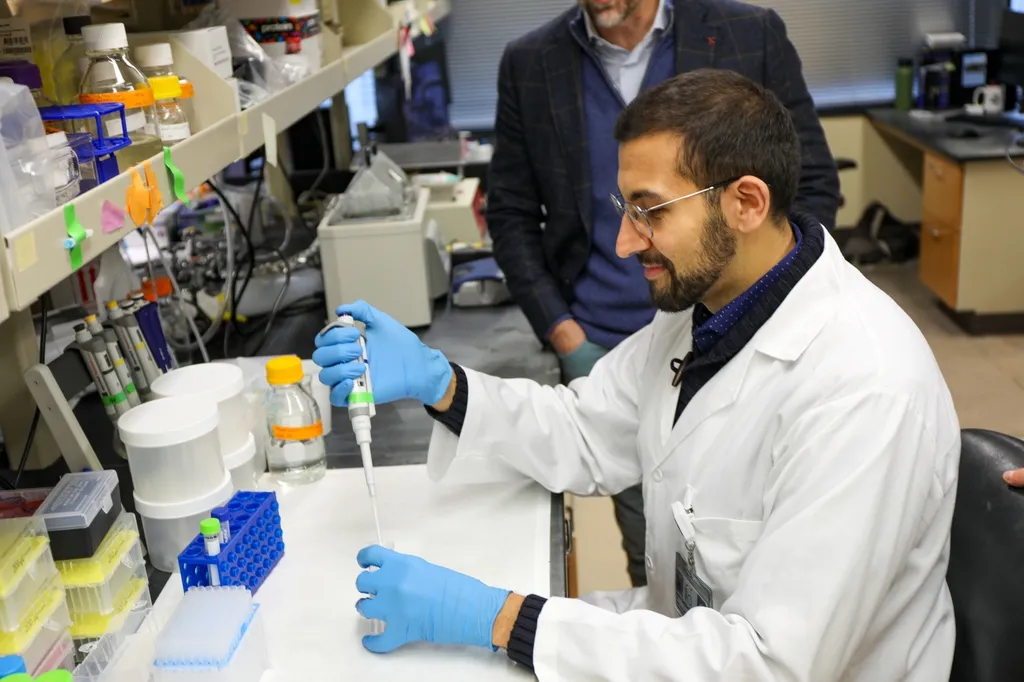In the relentless battle against sepsis, a global health menace responsible for millions of deaths annually, a beacon of hope emerges from the labs of Hebei Medical University. A groundbreaking study, published in the journal ‘Research’, has unraveled the intricate molecular mechanisms underlying immune heterogeneity in sepsis, paving the way for targeted therapies that could revolutionize patient outcomes.
The study, led by Xuan Wang from the Key Laboratory of Immune Mechanism and Intervention on Serious Disease in Hebei Province, delved into the complexities of sepsis by analyzing a staggering 1,862 human peripheral blood samples. The researchers constructed a molecular interaction disturbance network, a first-of-its-kind approach that illuminated the biological underpinnings of sepsis immune heterogeneity.
“What we found was astonishing,” Wang remarked, her voice tinged with the excitement of discovery. “We identified three distinct sepsis subtypes, each with unique prognostic characteristics. The C1 subtype, in particular, stood out due to its severe CD4+ T cell exhaustion, a hallmark of immune dysfunction that significantly worsens patient prognosis.”
The team’s comprehensive analysis, which integrated single-cell transcriptomics from over 450,000 cells, proteomics, and functional validation, pinpointed monocyte-derived matrix metalloproteinase-9 (MMP9) as a key culprit driving CD4+ T cell dysfunction. This finding is a game-changer, as it opens up new avenues for targeted therapies.
MMP9’s role in sepsis is a double-edged sword. On one hand, it promotes the aggregation of leukocyte-associated immunoglobulin-like receptor-1 (Lair-1) on T cell membranes, directly inhibiting zeta chain of T cell receptor associated protein kinase 70 (ZAP70) phosphorylation, a crucial step in T cell receptor signaling. On the other hand, MMP9 impairs Ca2+-release-activated Ca2+ channel function, leading to calcium dysregulation that blocks the activation and nuclear translocation of the nuclear factor of activated T cells (NFAT).
The implications of this research extend far beyond the realm of human health, with significant commercial impacts for the agriculture sector. Sepsis-like immune responses are not uncommon in livestock, often leading to reduced productivity and increased mortality. Targeting MMP9 could potentially alleviate these issues, boosting agricultural yields and economic gains.
The study’s findings were further validated through the use of a selective MMP9 inhibitor, MMP9-in-1. This inhibitor effectively reversed T cell dysfunction, restored calcium homeostasis and NFAT nuclear translocation, and markedly enhanced CD4+ T cell interleukin-2 and interferon-γ production. It also reduced programmed cell death protein 1 expression, a significant step towards improving sepsis prognosis.
This research establishes a comprehensive translational framework from molecular network disturbances to clinical phenotypes, significantly advancing our understanding of sepsis immunopathophysiology. It provides a robust foundation for the development of targeted therapies, offering hope for millions of sepsis patients worldwide.
As we stand on the precipice of a new era in sepsis treatment, the words of Xuan Wang resonate with profound significance: “Our work is just the beginning. The future of sepsis treatment lies in our ability to translate these molecular insights into effective, targeted therapies.” The journey is long, but the destination is clear, and the potential benefits for both human and agricultural health are immense.

